This is the first in a series of 14 posts expanding on Salzman's forecasts for 2013 in her annual trends report, a program of global communications group Havas Worldwide. This year's book, What's Next?: What to Expect in 2013, will be published on 12/12/12 and available at 120MBooks.com. Salzman is CEO of Havas PR North America and an internationally respected trendspotter.
One great way of reading the zeitgeist is to track which prefixes and suffixes are getting used to spice up old words and create new ones.
Take scandals and conspiracies. Since the 1972 Watergate scandal, the media has flagged any whiff of wrongdoing by adding -gate to it: Irangate, Nannygate, Nipplegate, Climategate, Monicagate. Other languages have even adopted it: There has been Pornogate in Switzerland, Pemexgate in Mexico and Petrogate in Peru.
Take our obsession with all things digital -- we're all busy dreaming up new words and names bearing witness to it. We are using not only cyber- (cyberbullying, cybercafé, cybercrime, cybernaut, cybersex, cyberspace, cyberwarfare) but also techno- (technomania, technophile, technophobe, technopolis). And don't forget net- (netbook, Netflix, netizens, netzine) or, of course, Apple's i- (iPad, iPhone, iPod, iTunes).
Take our fascination with the brain. The media is now regularly reporting that "new brain research shows" and driving neuro- deep into the popular culture. As well as the technical branches of neuroscience (e.g., neurobiology, neuromusicology, neurosurgery), we now have neuromarketing, neurosexism, neurogaming and neuromania. None of this will have surprised the original cyberpunk, William Gibson, who coined the term cyberspace and popularized it in his 1984 novel, Neuromancer.
Cyber-, neuro-, techno- and the rest have all been pretty easy to spot, because they're new and different. But there's a new prefix that has risen almost unnoticed; it's small and has been around for so long that it just blends in--until you pay attention. It's what links collaboration, community, commitment, company, connect and cohort as well as connect and common. Those two letters at the beginning -- co -- signal togetherness. They shift the focus from the individual to the links among people. Co- is the "we" particle. Co- is to 2013 what reboot was to 2009.
In its various forms (com-, col-, con-), co- has been part of the furniture for as long as we all can remember. But over the past few years, people have been feeling the need to highlight it and use it more emphatically. Just check out the number of times you see or hear co- used: Cohabitation, co-parenting, co-creation, co-authoring, coed, co-worker, co-religionist and co-production are just a few examples that easily spring to mind.
A new one rising fast is copreneurship, meaning a working relationship that used to be common in pre-industrial times before most people went out to work for someone else. Now it's being reframed for our post-industrial, post-feminist era as life partners of whatever gender and sexual orientation go into business together. Copreneurs are both involved in a joint business, with neither one engaging in a career outside the business; unlike regular business partners (e.g., Hewlett and Packard, Jobs and Wozniak) copreneurs are marital partners and business partners.
The co- trend is actually two trends commingled: There's the trend toward people deliberately combining their efforts at work, at home and online; and there's the related trend of pointing it out in the words that are used. The same people who used to be colleagues are now co-workers; they used to collaborate, but now they co-create.
One factor driving this trend is a reaction to the individualism that has prevailed for decades. It's a yin to the yang of self-development, self-discovery, self-mastery, selfish genes, personal growth, personal power, personal computers, personalization and, of course, Brand Me.
Another big factor is the economic crisis that knocked the world off-balance in 2007-08. For millions of people in North America, Europe and beyond, life has gotten tougher. Money is tighter, jobs are more precarious, safety nets are looking threadbare and the world seems pretty wild. In companies, the talk is now all about engagement, teams and culture. In public life, people are looking to strengthen their local communities. In private life, empty nests are filling again as multiple generations gather under the same roof to collaborate, pool resources, and share financial, practical and emotional support.
The tougher economy has also reduced people's knee-jerk impulse to use retail therapy as a feel-good option. It has prompted them to think about what makes life worth living and to realize that there's pleasure, satisfaction and security in doing things together. Bowling alone doesn't cut it. They're finding out for themselves by trial and error what social research has been showing for a long while: People need lots of social and community connections to thrive as individuals; individuals flourish when they are connected and when they make choices that benefit their connections with other people.
As the influential social psychologist Jonathan Haidt put it metaphorically in The Righteous Mind, human beings are 90 percent chimp and 10 percent bee. The chest-beating selfish drive is very strong, but there's also a strong urge to be part of a group and to feel unified in common causes. People have the ability to shut down their petty selves and become like bees in a hive, working for the good of the group. These experiences are often among the most cherished.
Social media platforms are blurring the me/we boundary in new and baffling ways. A superficial take sees only a lot of people staring at their screens, oblivious to the people around them. Look a little deeper and there are millions using social media as another channel of connection to stay in touch with wider circles and coordinate activities in the physical world.
